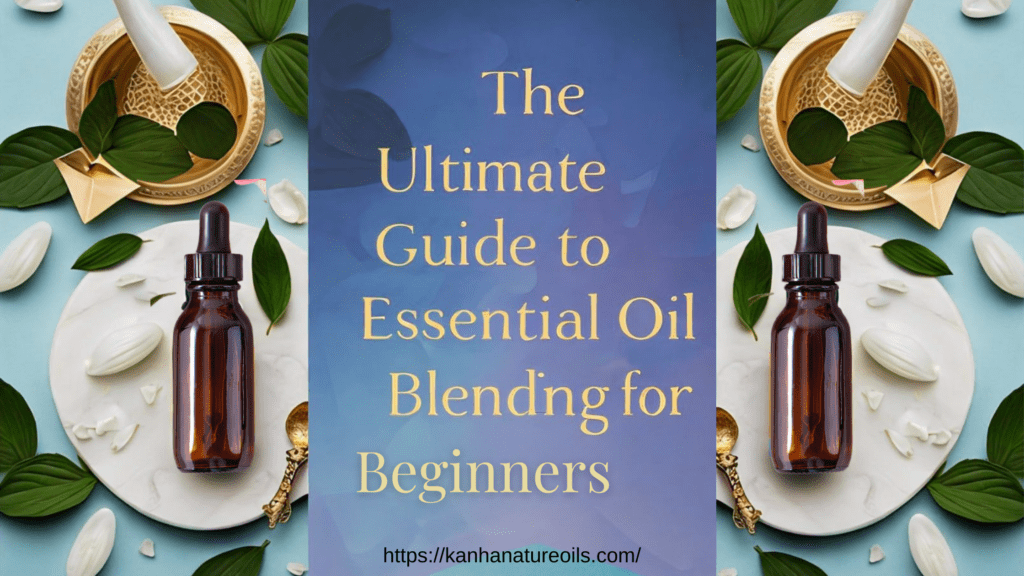The Ultimate Guide to Essential Oil Blending for Beginners
Essential oils have become increasingly popular for their natural therapeutic benefits, aromatic properties, and ability to transform everyday wellness routines. From calming stress to refreshing your home, these concentrated plant extracts have endless applications. But to truly unlock their potential, learning the art of blending is essential.
Essential oil blending is more than just mixing pleasant scents—it’s about creating harmony, balance, and purpose. The right combination can elevate your mood, support better sleep, improve focus, or even provide natural relief for minor ailments. However, for beginners, the process may feel intimidating: Which oils go together? How do you measure them? Are there safety rules to follow?
“This ultimate guide to essential oil blending for beginners will answer all your questions and more. By the end, you’ll feel confident enough to experiment with your own unique blends—whether for aromatherapy, skincare, or simply enjoying natural fragrances in your home. In this blog post, Kanha Nature Oils will walk you through everything you need to know to get started.”
What Is Essential Oil Blending?
Essential oil blending is the process of combining two or more essential oils to create a specific therapeutic effect or pleasing aroma. Think of it as crafting a perfume, but with the added benefits of aromatherapy. Unlike single oils, blends allow you to create customized experiences tailored to your needs.
For example:
-
Lavender + Chamomile → A calming, sleep-supportive blend.
-
Peppermint + Lemon → An energizing, refreshing blend.
-
Tea Tree + Eucalyptus → A cleansing, respiratory-supportive blend.
The goal is to achieve synergy, where the combined effect of the oils is greater than the sum of their parts.
Why Blend Essential Oils?
Blending has multiple benefits, including:
-
Enhanced Aroma – A single oil can be pleasant, but a blend adds complexity and depth.
-
Increased Effectiveness – Combining oils can amplify therapeutic properties, such as combining anti-inflammatory oils for pain relief.
-
Personalization – You can create scents that reflect your mood, lifestyle, or environment.
-
Versatility – Blends can be used in diffusers, massage oils, skincare, candles, and cleaning products.
The Basics of Essential Oil Properties
Before blending, it’s important to understand that essential oils fall into different categories of aromas and therapeutic actions. Knowing these basics helps you mix oils more effectively.
1. Aromatic Families
Essential oils are often grouped into scent families:
-
Citrus: Bright, uplifting (Lemon, Orange, Bergamot, Grapefruit).
-
Floral: Soft, calming (Lavender, Rose, Jasmine, Geranium).
-
Herbal: Fresh, balancing (Rosemary, Basil, Marjoram, Thyme).
-
Woody: Grounding, stabilizing (Cedarwood, Sandalwood, Patchouli).
-
Spicy: Warm, stimulating (Clove, Ginger, Cinnamon).
-
Resinous: Deep, meditative (Frankincense, Myrrh, Benzoin).
2. Therapeutic Properties
Different oils support different needs. For example:
-
Lavender → Relaxing, soothing.
-
Peppermint → Energizing, cooling.
-
Eucalyptus → Respiratory support.
-
Tea Tree → Antimicrobial.
By matching scent families with therapeutic properties, you can create blends that are both pleasant and functional.
Blending essential oils offers numerous benefits, including:
- Enhanced therapeutic effects
- Unique and complex aromas
- Customized blends for specific needs
- Increased shelf life
- Cost-effective
Tips for Creating Your Own Signature Blends
-
Keep it simple – Start with 2–3 oils before experimenting with more complex blends.
-
Record everything – Write down your ratios, successes, and failures.
-
Give it time – Some blends smell better after “resting” for 24 hours.
-
Trust your nose – Aromatherapy is as much an art as it is a science.
-
Experiment seasonally – Citrus in summer, spicy blends in winter.
Common Mistakes Beginners Should Avoid
-
Using too many oils at once → This can create a muddled aroma.
-
Not diluting properly → Can cause skin irritation.
-
Skipping research → Some oils have contraindications (e.g., Peppermint for children).
-
Overpowering with strong oils → Oils like clove or cinnamon should be used sparingly.
Advanced Tips for Blending (When You’re Ready)
Once you’ve mastered the basics, you can:
-
Create synergies by combining oils with similar therapeutic effects (e.g., Lavender + Chamomile for relaxation).
-
Use perfumery principles to craft long-lasting scents.
-
Experiment with layering in skincare (using blends in serums, creams, and masks).
-
Make seasonal or themed blends for holidays, meditation, or yoga practices.
Conclusion
Nature Essential oil blending is an exciting journey that combines creativity, science, and self-care. For beginners, the key is to start simple, focus on purpose, and experiment with balance. With practice, you’ll develop your own unique blends that reflect your personality, support your wellness, and fill your environment with natural beauty.
Remember: blending is not about perfection, but about exploration and connection with nature’s gifts. Each drop carries centuries of plant wisdom, waiting to be combined into something uniquely yours.
Contact us: info@aromatherapyoil.in
Mobile Number: 9810805866

